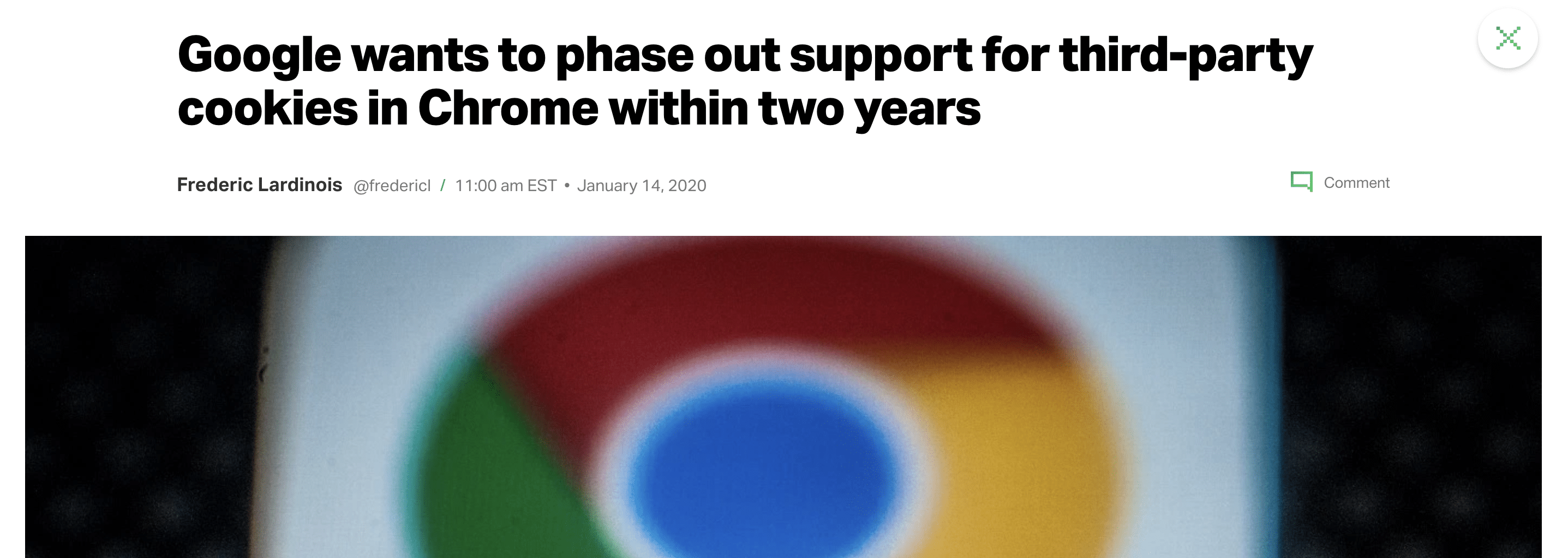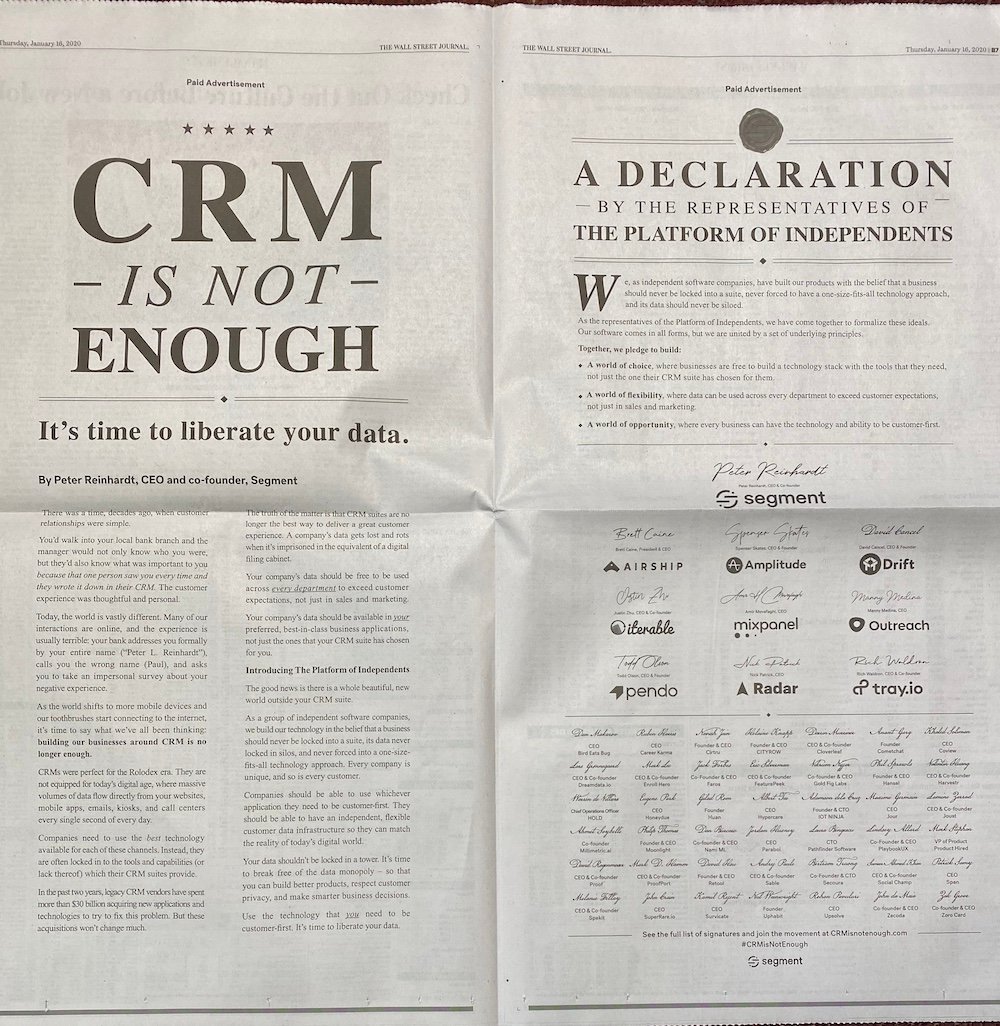Phasing out 3rd Party Cookies in Chrome
Google has made it official. They're phasing out 3rd party cookies in Chrome.
Sure, it's long after other major browsers did the same. And yes, it's not for two years.
But...if you recently signed a three year contract for some sort of intent data that's based on cookie technology?
Well, it's probably not good news.
In fact, it highlights two issues.
Understand How Data is Collected
it's important to understand how different data sources are collected.
Bidstream type data is probably the most likely to be impacted by this decision. It's a big deal according to Digiday's breakdown of the move. "The third-party cookie served as the workhorse of the independent ad tech ecosystem. Cookies are how ad tech companies communicate with one another in order to trade programmatic ads."
While providers have likely been working on adopting fingerprinting technology to circumvent cookie restrictions, the resulting "identity connection is brittle." Further, "Apple, Mozilla and now Google have called out these workarounds (fingerprinting and probabilistic ID) as covert ways of circumnavigating the loss of a third-party cookie — and as being just as problematic as the cookie."
What's interesting is the behind the scenes approach some intent data providers have taken to obtain detailed bidstream data. They've built their own white label demand-side platform (DSP) with little intent of actually placing ads, but simply to access the insights from publisher connections and ad requests. Surprised? It is kind of sketchy for sure.
The sketchiness of bidstream data doesn't end there though.
A recent Terminus article discussing their integrated Bombora Surge Data highlighted specific concerns.
Bidstream intent data
Bidstream data is user behavior captured by an ad pixel and shared through ad exchanges (there are growing concerns over bidstream’s incompatibility with GDPR).
IntentData.io's data is collected from observing public actions that users are taking around the web. That means that first, we observe action (not reading, searching, browsing, being shown an ad, etc.) which we believe is a more concrete manifestation of intent. Second, people are taking these actions publicly for the world to see. We do not use any cookies, bidstream data or reverse IP lookups.
Privacy Sandbox & 2nd Party Opening
Google's solution will be good for Google...unsurprisingly.
Digiday continues:This cements Google’s dominant position in digital advertising. Google already tested a similar theory last year when it launched the Ads Data Hub; that interface now represents the only way advertisers can understand user-level information about programmatic campaigns.
While that's not a solid alternative for data providers whose model is built on 3rd party cookie enabled bidstream data, this probably represents a good opportunity for second-party data providers. Publishers like TechTarget and G2 who own registered user relationships with terms of service which allow the publishers to sell individual identified and/or aggregate anonymous data will likely benefit. Most publishers are narrowly industry focused, however, which limits the clients for whom their data is applicable.
Either way there's a lesson here for you if you're researching intent data.
Demand Reasonable Contract Terms
The Chrome phase out in two years sounds like plenty of time to react..
Who knows how intent data technology will evolve in the meantime (our two year roadmap anticipates vastly different capabilities.) In fact, intent data is really only two or three years old at this point anyway, and it's come a long way from crude account-level only indicators.
This cookie situation highlights a key commercial consideration.
Why would anyone sign a one year deal for intent data that they haven't fully used and vetted yet - much less a three year deal?
Great question, but we see more and more three year deals in the industry.
It's unnecessary.
Intent Data isn't like implementing an ERP or even a CDP, CRM or marketing automation platform. It's not a huge project to implement.
Sure, over time as you build complex integrations with multiple sources, you'll create orchestration based on certain factors. But behind those factors are data sets that should be aggregated and unified in a CDP anyway. So it should be easy to switch out intent data sources.
That's not great for "stickiness" from the perspective of a data vendor.
But that's not necessarily a problem for clients. Truth be told, it's really an investor/return issue and we don't believe that's our clients' burden to bear. We believe that the data should continuously resell itself. Quarterly.
After all, It's time to liberate your data!
click for a larger version - from the WSJ, 6 Jan 2020





